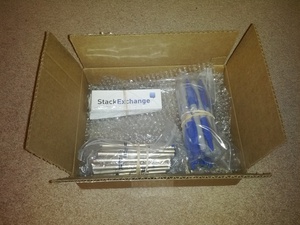Off to DC! Quark Matter 2012
Posted by David Zaslavsky on — Edited
Updates on this blog have been kind of sporadic over the past couple months, I know. Part of the reason for that is that the posts I want to do involve some research which I haven’t entirely had time for, but besides that, I’ve also been busy preparing for my presentation at Quark Matter 2012! This is a physics conference that focuses on the study of the strong force in systems that contain lots of quarks and gluons — not just individual protons and neutrons, but entire atomic nuclei as well.
The particular piece of research I’ll be presenting is about the particle reaction \(\mathrm{p}A\to e^- e^+ \pi^0 X\): a proton collides with an atomic nucleus (the \(A\)) and produces an electron-positron pair, a pion, and other junk which we don’t care about (the \(X\)). The electron and positron themselves are produced from a (virtual) photon, so when you get down to the core of it, the reaction is really \(qg\to q\gamma^*\): a quark from the proton and a gluon from the nucleus interact to give a quark and a photon.
What we’re interested in is the angle between that …


